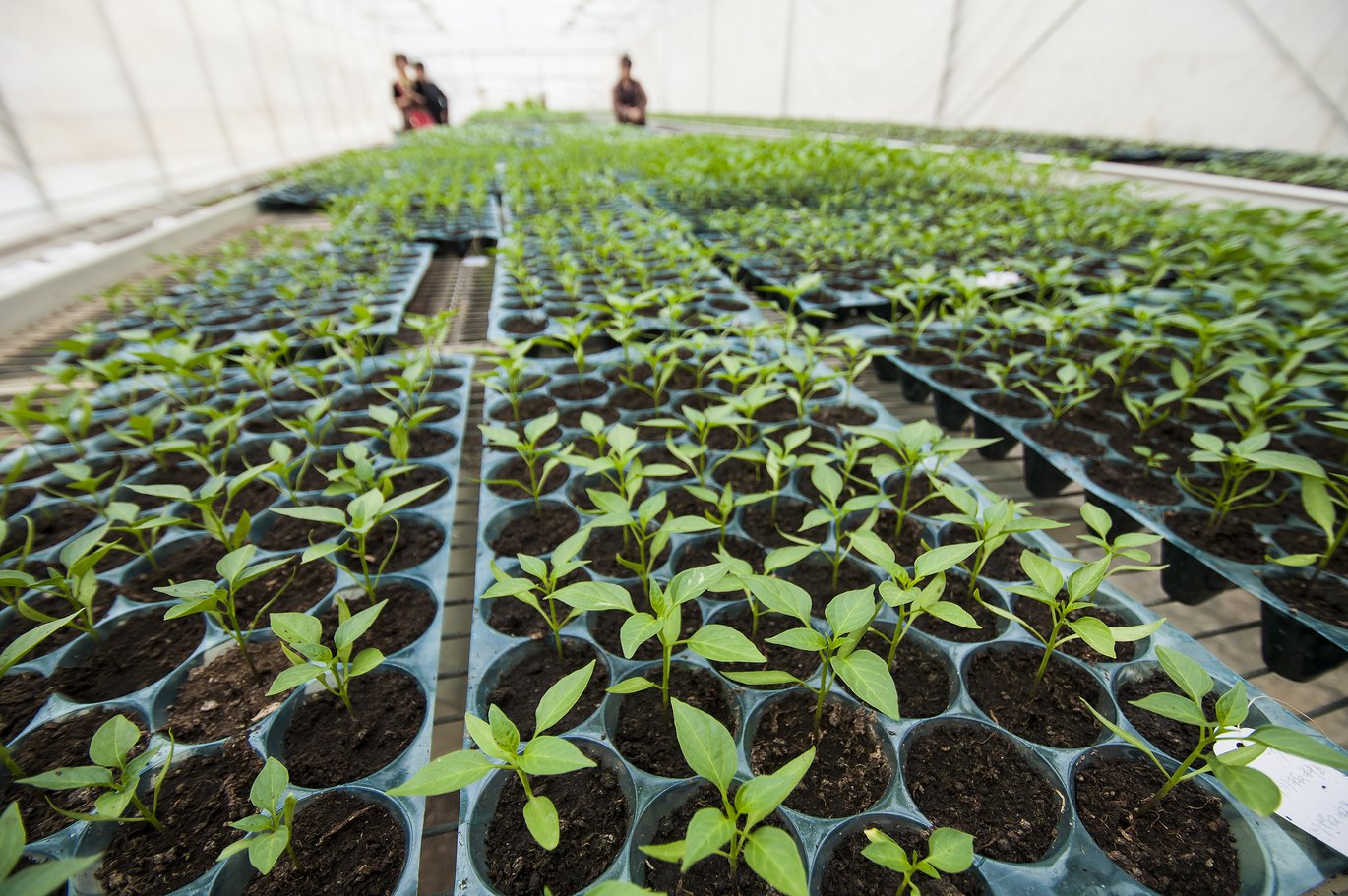Growing media with low or no peat: A sustainable solution
In response to the increasing pressure on the horticultural sector to reduce greenhouse gas emissions, a recent study explores the potential of using growing media with reduced or no peat included as a sustainable alternative.

In recent years, there has been growing concern about the environmental impact of traditional peat-based growing media used in the horticultural industry. Peat extraction and use contribute significantly to greenhouse gas emissions, prompting the exploration of alternative materials. Amid escalating concerns about climate change, the horticultural industry confronts the imperative to mitigate its environmental impact. One of the significant contributors to greenhouse gas emissions is the use of peat as a growing medium. F Fatemeh Hashemi, an assistant professor at Aarhus University and author of a life cycle assessment study examining the climate impact of alternative growth media, notes: “There are several issues associated with peat extraction and use. It leads to CO2 emissions, among other things. We need to develop alternatives that reduce the climate footprint while maintaining good plant growth."
Exploring sustainable alternatives
Fatemeh Hashemi elaborates on the objectives of the BioSubstrate project, led by the Danish Technological Institute, which aimed to reduce emissions linked to peat usage by identifying locally available bio-based substitutes for peat in supporting plant growth. Through the project, materials such as willow-based wood fibre, compost and hydrochar, and degassed fibre sourced from agricultural waste or byproducts, emerged as promising alternatives to peat.
"The aim of the project was to find materials that not only reduce emissions but also ensure optimal conditions for plant growth. Therefore, we conducted a life cycle analysis (LCA) of alternative growth media, including all processes. We did this to estimate the climate footprint associated with the production and use of different types of growth media,” Fatemeh Hashemi says.
While the focus in the first project was primarily on alternative growth media based on a single biomass, a new project called BioSubstrate 2.0 is underway to examine both plant growth and the environmental consequences of using mixtures of different biomasses as growth media.
"Peat-free growing media exhibit significant reductions in greenhouse gas emissions," she confirms. "There's substantial potential for reducing climate impact by integrating bio-based materials as growing media."
However, she emphasises the importance of careful feedstock selection and processing methods. "The efficacy of these alternatives hinges on meticulous consideration of raw materials and processing techniques."
Climate impact of bio-based growing media
Several studies have investigated bio-based materials as peat alternatives, considering their physical, chemical, and biological properties. These materials include compost, wood-derived materials, coconut coir, biochar, and agricultural waste, either individually or in mixtures.
This study's evaluation of alternative growing media reveals promising reductions in greenhouse gas emissions relative to peat usage. The incorporation of hydrochar leads to a substantial decrease in emissions, primarily because of its capacity for long-term carbon sequestration. This ability helps offset its higher negative climate impacts compared to other substrates during production.
“Processed wood fibre emerged as a climate friendly option, offering low greenhouse gas emissions throughout its lifecycle. Additionally, both compost and degassed fibre demonstrate potential for emission reduction” Fatemeh Hashemi explains.
Although the utilisation of agricultural waste materials presents an appealing avenue for reducing greenhouse gas emissions, it necessitates energy-intensive processing.
Adopting sustainable growing media alternatives
While the climatic benefits of alternative growing media have been reported, uncertainties remain regarding optimal application of alternative biomass to produce growing media that secure a stable plantgrowth. It means understanding how fast they decompose as well as their ability to store carbon..
“Uncertainties in input-output data and emission estimates could affect our results somewhat, but the substantial reduction in greenhouse gas emissions from peat to alternative media remains robust. However, further research is needed to explore alternative growing media and to address uncertainties and integrate both the plant growth potential of the media as well as reducing the cost of production,” Fatemeh Hashemi says.
The study underscores the importance of collaborative efforts to identify and adopt suitable growing media alternatives, considering factors such as physical properties, cultivation management changes, and stakeholder alignment. While the study highlights the potential of alternative growing media to reduce greenhouse gas emissions, it acknowledges that current alternatives may not fully replace peat. Hence the need for further development and testing of growing media.
More information
| ITEM | CONTENT AND PURPOSE |
|---|---|
| Type of study | Life cycle analysis (LCA) |
| External collaborators | Department of Agroecology and Department of Food at Aarhus University, Aarhus University Interdisciplinary Centre for climate change (iCLIMATE), Department of Biological and Chemical Engineering at Aarhus University, and Danish Technological Institute (DTU). |
| External funding | This study was part of the BioSubstrate project funded by the Danish Green Development and Demonstration Program (GUDP) (Grant number 34009-18-1435) and led by Søren Ugilt Larsen. We thankfully acknowledge valuable graphical abstract provided by Huayang Zhen. |
| Conflict of interest | The authors declare that they have no known competing financial interests or personal relationships that could have appeared to influence the work reported in this paper. |
| Link to the scientific article | The publication: “Greenhouse gas emissions from bio-based growing media: A life-cycle assessment” is published in Science of the Total Environment. It is written by Fatemeh Hashemi, Lisbeth Mogensen, Aidan Mark Smith, Søren Ugilt Larsen, and Marie Trydeman Knudsen. |
| Contact information | Assistant Professor Fatemeh Hashemi, Department of Agroecology, Aarhus University. Email: fh@agro.au.dk |
